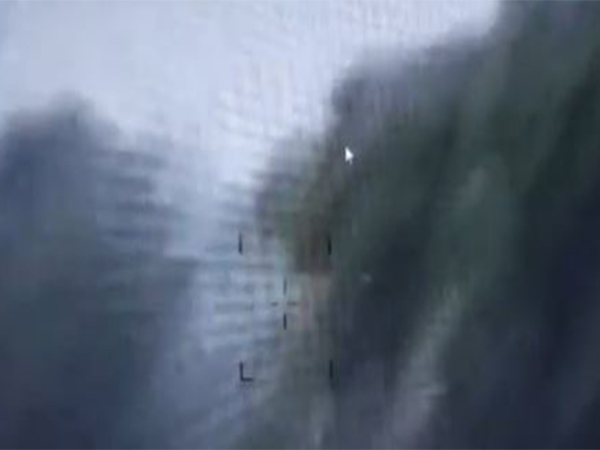Washington, DC [US], May 15 (ANI): India’s strikes on Pakistan damaged runways and structures across at least six airfields, according to a visual analysis by The Washington Post, which experts said were the most significant attacks of their kind in decades of simmering conflict between the two nations.
In retaliation for the terrorist attack in Jammu and Kashmir’s Pahalgam on April 22, the Indian Armed Forces launched Operation Sindoor on May 7 and targeted terror infrastructure in Pakistan and Pakistan-occupied Jammu and Kashmir,
A review of over 24 satellite images and aftermath videos found that the strikes heavily damaged three hangars, two runways and a pair of mobile buildings used by the air force. Some of the sites that were hit by India were as deep as 100 miles inside Pakistan.
Walter Ladwig, a senior lecturer in international relations at King’s College London and an expert in South Asian security issues, told the Washington Post that the strikes marked “the most extensive Indian air attacks on Pakistani military infrastructure since the 1971 war.”
William Goodhind, a geospatial analyst at Contested Ground, a research project that uses satellite imagery to track armed conflict, said “high-profile targets were hit in precision strikes with the aim of severely degrading Pakistan’s offensive and defensive air capabilities,” The Washington Post reported.
Following the strikes, India has said that it has hit 11 bases in Pakistan and termed its actions “measured and calibrated”, including the sites where The Washington Post confirmed damage.
Speaking to reporters, Pakistan’s chief military spokesperson, Lt Gen. Ahmed Sharif Chaudhry, said there had been infrastructure damage to bases. However, he did not mention the number of bases that had been hit. The Pakistani military said on Wednesday that six members of Pakistan’s air force were killed.
Christopher Clary, an associate professor at the University at Albany and author of a book on the India-Pakistan rivalry, told the Post, “The satellite evidence is consistent with the claim that the Indian military inflicted meaningful — though in my view not devastating — damage on the Pakistan air force at a number of bases across eastern Pakistan.”
After reviewing satellite imagery, Goodhind said that two mobile control centres were destroyed at Nur Khan air base in Rawalpindi, just outside Islamabad. Video from a nearby parking lot showed smoke billowing from the damaged site.
The Nur Khan air base, one of the most important in Pakistan, is in close proximity to the Strategic Plans Division, the unit responsible for safeguarding the country’s 170 nuclear warheads, stored in facilities across Pakistan.
Furthermore, the military’s General Headquarters and the Joint Staff Headquarters are housed near Nur Khan in Rawalpindi. The military researcher, speaking on the condition of anonymity as he was not authorized to speak to the media, said, “such an attack could have been mistaken as an attempt to destroy the control center of the country.”
Satellite imagery showed severe damage to buildings used as aircraft hangars at the Pakistani air force’s Bholari and Shahbaz air bases. A large hole nearly 60 feet wide could be seen in the roof of a hangar at Bholari, which experts said was consistent with the missile’s impact. Debris was spread across the pavement outside, and a wall seemed to have toppled over an adjacent building.
According to the military researcher, the Bholari hangar houses a Saab 2000 Airborne Early Warning and Control System aircraft — a surveillance plane worth tens of millions of dollars, The Washington Post reported.
Satellite imagery showed another large hole over 100 feet wide in a hangar at Shahbaz air base, which is used exclusively by the military and damage to a control tower. According to Goodhind, another hangar seemed to have been collapsed by a strike and an apparent radar site was destroyed at Sukkur Airport, which is used for civilian and military purposes.
Large craters in runways were left at Mushaf air base and Sheikh Zayed International Airport following India’s strikes. According to images from the satellite firms Planet and Maxar, the craters at Mushaf seemed to be fixed or under repair by the day after
On Wednesday, the Pakistani military said five members of the air force were killed at Bholari and one at Mushaf. Sheikh Zayed Airport’s Royal Lounge has been damaged significantly, The Washington Post reported, citing Pakistan-based newspaper Dawn.
Ladwig said, “Striking so many military facilities in Pakistan proper at one time reflects a deliberate shift,” noting that India had previously limited its air operations to Pakistan-occupied Jammu and Kashmir or remote parts of Pakistan. Ladwig said India is now “treating terrorist attacks as grounds for conventional military reprisals.”
As many as 26 people were killed and several others were injured in the terrorist attack that took place in Jammu and Kashmir’s Pahalgam on April 22.
In response to the Pahalgam attack, Indian Armed Forces launched Operation Sindoor on May 7 and targeted terror infrastructure in Pakistan and PoJK, leading to the death of over 100 terrorists affiliated with terror outfits like the Jaish-e-Mohammed (JeM), Lashkar-e-Taiba (LeT) and Hizbul Mujahideen (HM).
After the attack, Pakistan retaliated with cross-border shelling across the Line of Control and Jammu and Kashmir as well as attempted drone attacks along the border regions, following which India launched a coordinated attack and damaged radar infrastructure, communication centres and airfields across airbases in Pakistan. On May 10, India and Pakistan reached an understanding on the cessation of hostilities.
On Monday, Prime Minister Narendra Modi said that Operation Sindoor has carved out a benchmark in India’s fight against terrorism and has “set up a new parameter and new normal”.
While addressing the nation on Monday, PM Modi said, “After the surgical strike and air strike, now Operation Sindoor is India’s policy against terrorism. Operation Sindoor has carved out a new benchmark in our fight against terrorism and has set up a new parameter and new normal,” he said.
“First, If there is a terrorist attack on India, a fitting reply will be given. We will give a befitting response on our terms only. We will take strict action at every place from where the roots of terrorism emerge. Secondly, India will not tolerate any nuclear blackmail. India will strike precisely and decisively at the terrorist hideouts developing under the cover of nuclear blackmail,” he added. (ANI)
Disclaimer: This story is auto-generated from a syndicated feed of ANI; only the image & headline may have been reworked by News Services Division of World News Network Inc Ltd and Palghar News and Pune News and World News
HINDI, MARATHI, GUJARATI, TAMIL, TELUGU, BENGALI, KANNADA, ORIYA, PUNJABI, URDU, MALAYALAM
For more details and packages














